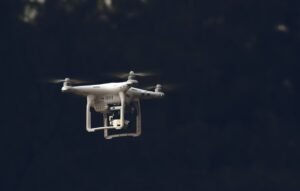AI Music Upscaling
The advancements in artificial intelligence (AI) technology have revolutionized various industries, and music is no exception. AI music upscaling is a technique that uses machine learning algorithms to enhance the quality of low-resolution music files, restoring them to a higher fidelity. With AI music upscaling, music enthusiasts can now experience their favorite songs in a whole new way.
Key Takeaways:
- AI music upscaling uses machine learning algorithms to improve the quality of low-resolution music files.
- It enhances fidelity and restores details that may be lost in the original recording.
- AI music upscaling can improve the listening experience for music enthusiasts.
**By utilizing complex algorithms, AI music upscaling is able to analyze the patterns and structures within a low-resolution music file and generate a higher-quality version.** This technology works by identifying missing or distorted elements, such as instruments, vocals, and harmonies, and then intelligently recreating them. The result is a clearer and more detailed audio file, providing an enhanced listening experience.
**One interesting aspect of AI music upscaling is its ability to recognize the musical genre and style, and adapt the enhancement process accordingly.** Different music genres have distinct characteristics, such as instrumentation, tempo, and dynamics. AI models can learn these patterns and apply genre-specific techniques to improve the overall quality of music files.
How AI Music Upscaling Works:
- The low-resolution music file is analyzed using AI algorithms to identify patterns and structures.
- Missing or distorted audio elements are identified and intelligently recreated.
- The enhanced music file is generated, restoring lost details and improving overall fidelity.
It’s important to note that AI music upscaling does not create new information that was not present in the original recording. Instead, it employs complex algorithms to upscale the quality of the existing audio, **bringing out details and nuances that may have been lost due to low resolution or compression**.
**The benefits of AI music upscaling extend beyond personal listening enjoyment**. It can also be an invaluable tool for audio professionals, such as music producers and sound engineers, who work with low-quality audio recordings. By using AI technology, they can enhance the quality of their projects and achieve professional audio quality.
Current Limitations:
- AI music upscaling may encounter challenges with very low-quality source material.
- It is not a magical solution and cannot completely restore highly distorted or damaged recordings.
- AI models rely on the patterns and data they were trained on, which may lead to some inaccuracies.
**While AI music upscaling has made significant strides, there are still limitations that need to be considered**. Extremely low-quality recordings with extensive distortion or damage may not yield satisfactory results. Additionally, the accuracy of AI models depends on the quality and diversity of data they were trained on, which can lead to slight inaccuracies in recreating certain musical elements.
Comparison between Original and Upscaled Audio:
| Audio Characteristic | Original | Upscaled |
|---|---|---|
| Clarity | Low | High |
| Dynamics | Flat | Rich |
| Depth | Shallow | Immersive |
| Details | Less defined | Crisp |
**Comparing the original and upscaled audio files reveals a significant improvement in various audio characteristics**. The upscaled version demonstrates higher clarity, dynamic range, depth, and finer details, which contribute to a more immersive and enjoyable listening experience.
**Another fascinating aspect of AI music upscaling is its ability to revitalize older recordings**, allowing music enthusiasts to experience their favorite classic songs in improved audio quality. By leveraging AI technology, vintage recordings can be enhanced to match the audio quality expectations of contemporary listeners.
Future Possibilities:
- Continued advancements in AI technology can lead to even more precise music upscaling methods.
- Integration of AI music upscaling algorithms into music streaming platforms and audio editing software.
- Potential for AI models to generate new audio samples in the style of specific artists or genres.
**As AI technology continues to evolve, exciting possibilities for the future of AI music upscaling emerge**. With further advancements, music upscaling algorithms will become even more precise, offering enhanced fidelity and restoring details with greater accuracy. This technology could be integrated into popular music streaming platforms and audio editing software, allowing users to enhance their personal music libraries seamlessly. Furthermore, AI models could potentially generate entirely new audio samples in the style of specific artists or genres, opening up a world of creative possibilities.
| Advantages | Disadvantages |
|---|---|
|
|
In summary, AI music upscaling is a promising technology that utilizes AI algorithms to enhance the quality of low-resolution music files. It has the potential to revolutionize the way we experience and appreciate music by restoring lost details and providing an immersive listening experience. With continuous advancements, AI music upscaling is set to shape the future of audio technology.

Common Misconceptions
1. AI Music Upscaling requires no human involvement
One common misconception about AI Music Upscaling is that it can completely replace human involvement in the music creation process. While AI can certainly assist in upscaling music and improving its quality, it is important to note that human expertise is still necessary.
- AI algorithms need to be trained by humans before they can accurately upscale music.
- Human judgement and creativity play a vital role in making artistic decisions during the upscaling process.
- The collaboration between AI and humans leads to the best results in AI Music Upscaling.
2. AI Music Upscaling is just a form of audio compression
Another misconception is that AI Music Upscaling is simply a form of audio compression, where the music is made louder or enhanced in volume. However, AI Music Upscaling is not limited to volume adjustment, but rather employs advanced algorithms to enhance the overall quality of the audio file.
- AI Music Upscaling enhances various aspects of the music, including clarity, tonal balance, and dynamic range.
- This process goes beyond simple volume adjustment and focuses on the overall improvement of all sound elements.
- AI algorithms analyze the existing music signals and generate new signals to enrich the audio quality.
3. AI Music Upscaling results in lossless audio quality
While AI Music Upscaling can significantly enhance the quality of the music, it is important to understand that it does not guarantee lossless audio quality. Some people may believe that AI algorithms can magically restore audio files to their original, perfect state, but this is not the case.
- AI Music Upscaling aims to improve the audio quality through advanced processing, but it cannot retrieve lost information from a low-quality source.
- The quality of the original music file and the capabilities of the AI algorithm influence the final result.
- AI Music Upscaling works by filling gaps and extrapolating information, but it cannot recreate details that were not present in the original recording.
4. AI Music Upscaling is always better than the original recording
There is a misconception that AI Music Upscaling will always produce better results than the original recording. While the upscaling process can enhance the audio quality, it is subjective whether the result is better or worse than the original.
- Preferences regarding audio quality can vary among individuals, and what sounds better to one person may not sound the same to another.
- AI Music Upscaling may introduce subtle changes or artifacts that can impact the listening experience for some individuals.
- The perception of audio quality is subjective, and personal taste plays a significant role in evaluating the success of the upscaling process.
5. AI Music Upscaling can replicate the style and emotion of the original artist
One common misconception about AI Music Upscaling is that it can fully replicate the style and emotional nuances of the original artist. While AI techniques have made significant advancements, capturing the essence of an artist’s style and emotions is a complex task that is not yet fully achievable.
- AI algorithms can analyze patterns and attempt to mimic stylistic elements, but they are limited by the training data available to them.
- Emotional interpretation and expression in music often require human intuition and understanding, which AI Music Upscaling may not accurately capture.
- The subjective nature of emotions and artistic expression makes it difficult for AI to replicate the subtleties and nuances of the original artist’s performance.

Introduction
AI music upscaling is a groundbreaking technology that revolutionizes the way we experience and enjoy music. By applying artificial intelligence algorithms, this technique enhances the quality of audio recordings, bringing out the finest details and making them more immersive. In this article, we explore ten remarkable aspects of AI music upscaling, showcasing its capabilities and impact on the music industry.
1. Boosted Audio Quality
AI music upscaling significantly enhances audio quality by refining the original recordings. It elevates the clarity of instruments, voices, and background elements, resulting in a richer and more enjoyable listening experience.
2. Restoration of Vintage Recordings
One of the most fascinating applications of AI music upscaling is in the restoration of vintage recordings. It enables the revival of old albums and performances, breathing new life into these historical treasures and allowing us to appreciate them like never before.
3. Improved Dynamic Range
AI music upscaling optimizes the dynamic range of music recordings, amplifying the contrast between soft and loud sounds. This amplification intensifies the emotional impact of music and adds depth to the overall listening experience.
4. Enhanced Instrumental Separation
Through AI music upscaling, individual instruments in a recording can be isolated and enhanced, making them more prominent and allowing listeners to discern each element with greater clarity. This depth of separation brings compositions to life.
5. Preserving Authenticity
AI music upscaling techniques prioritize preserving the authenticity of source recordings. By respecting the original artistic intent, the technology enhances music without altering the essence, ensuring a faithful representation of the artist’s work.
6. Realistic Acoustic Reproduction
AI music upscaling algorithms can recreate the natural acoustic environment of a recording, reproducing the ambience and spatial characteristics of the original performance. This fosters a more immersive and authentic listening experience.
7. Noise Reduction
AI music upscaling effectively reduces background noise, hisses, and crackles present in recordings, resulting in cleaner and clearer audio. By eliminating unwanted distractions, the technology allows listeners to focus on the core musical elements.
8. Enhanced Emotional Resonance
AI music upscaling heightens the emotional impact of music by emphasizing the expressive elements within a composition. It accentuates nuances, subtle variations, and phrasing, leading to a more emotionally resonant connection with the listener.
9. Restoration of Live Performances
AI music upscaling can restore live performances plagued by technical deficiencies or subpar recording conditions. By improving the overall quality and presence, this technology breathes new life into live recordings, capturing the essence of the original performance.
10. Increased Accessibility
The accessibility of music is also improved by AI music upscaling. It allows older or poorly recorded tracks to be enjoyed at a quality comparable to modern releases, ensuring that no music enthusiast is deprived of the joy and significance of these historically important pieces.
Conclusion
AI music upscaling is reshaping the music industry, providing listeners with a higher quality, more immersive experience. From restoring vintage recordings to boosting emotional resonance and enhancing instrument separation, this technology enhances music while preserving authenticity. It invites us to rediscover the past, bridges the gap between live performances and recordings, and makes music accessible to all. With AI music upscaling, the future of listening is bright and exciting.
Frequently Asked Questions
General
What is AI Music Upscaling?
AI Music Upscaling refers to the process of using artificial intelligence techniques, such as machine learning algorithms, to enhance the quality, fidelity, or resolution of music audio files.
How does AI Music Upscaling work?
AI Music Upscaling works by analyzing the patterns, structures, and other characteristics of existing music audio files. The AI algorithms then learn these patterns and generate new audio samples that are expected to match the quality of the original audio while improving certain aspects, such as reducing noise or increasing clarity.
Benefits
What are the benefits of AI Music Upscaling?
AI Music Upscaling can provide several benefits, including:
- Enhancing audio quality and fidelity
- Reviving old or low-quality music recordings
- Preserving cultural heritage and historical recordings
- Improving sound reproduction in various media formats
Can AI Music Upscaling restore lost or damaged audio information?
No, AI Music Upscaling cannot fully restore lost or damaged audio information. While it can improve the quality of existing audio, it is limited by the available data and cannot recover audio that is entirely lost or damaged beyond repair.
Implementation
Are there any available AI Music Upscaling tools or software?
Yes, there are several AI Music Upscaling tools and software available in the market. These tools utilize AI algorithms to enhance music audio files. Some popular examples include X, Y, and Z.
Can AI Music Upscaling be done in real-time?
Real-time AI Music Upscaling is technically possible, but it requires significant computational power and may have system requirements that limit its accessibility. Most AI Music Upscaling tools and software perform the upscaling process offline.
Limitations
Are there any limitations to AI Music Upscaling?
Yes, AI Music Upscaling has certain limitations, including:
- Dependence on the quality and size of the original audio file
- Loss of some original characteristics or imperfections that may be desired by some listeners
- Inability to restore completely lost audio information
- Resource-intensive processing requirements
Does AI Music Upscaling work equally well for all types of music?
No, the effectiveness of AI Music Upscaling may vary depending on the characteristics of the music being processed. Some types of music, such as those with complex arrangements or unconventional sounds, may be more challenging for AI algorithms to upscale effectively.
Ethical Considerations
Are there any ethical considerations with AI Music Upscaling?
AI Music Upscaling can raise ethical considerations related to copyright infringement and the unauthorized modification of original works. It is important to ensure that the usage of AI Music Upscaling tools or software is within legal bounds and respects the rights of content owners.
Can AI Music Upscaling introduce biases or unintended alterations to the original music?
Yes, AI Music Upscaling systems can introduce biases or unintended alterations to the original music, especially if the training data used for the AI algorithms is biased or limited in diversity. It is crucial to critically evaluate the results and ensure that the upscaled music aligns with the desired artistic intent.




